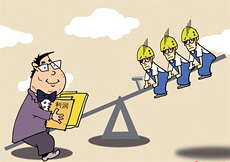Looking for more insights?
Sign up to stay informed about our latest article releases.
It's not only China's drive to reduce its economy's dependence on exports that has been drawing attention to the country's role as the world's low-cost factory. Other factors include recent strikes and the tragic suicides of several factory workers in China this year. One consequence of the attention, say many economists and scholars, is that wages for much of China's workforce will begin rising, potentially leading to a number of positive knock-on effects inside and outside the country. But does that mean China’s competitiveness as a low-cost production base is under threat and how much can the pay raises help the country address its demographic time bomb?

Sign up to stay informed about our latest article releases.